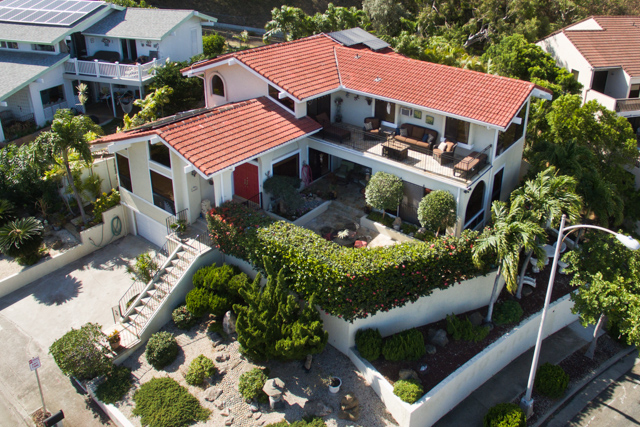
Many particulates tend to stick to the surfaces of materials with which they come into contact, and there are two reasons for this. The first is… those particles are sticky! Particulates from cooking are a good example of this process.
When you fry something (say, a breaded squirrel in a lemon and dill butter sauce), you can see tiny droplets of grease buildup on the stove around the frying pan. Grease droplets smaller than those that land on your stove can become airborne. Stove hoods with fans and filters are installed in kitchens so that airborne grease won’t accumulate on the wall above the stove.
In homes with inadequately working stove fans or vents (or in homes where the occupants cook six squirrels at a time), the ability of the range hood to remove tiny airborne grease droplets from the air overwhelms the system, and those sticky grease droplets can escape from the cooking area and move through the home carried by air currents.
Another reason that airborne particles are attracted to a surface is that all airborne particles and surfaces carry an electrical charge. In the world of electrical charges, opposites attract. A negatively charged airborne particle will be attracted to a positively charged surface. So, if they come close enough to each other, the negatively-charged particle will land on and stick to the positively-charged surface (just like male and female squirrels).

So, now we know that both sticky particles and those with opposite electrical charges will plate out onto the home’s surfaces. If the plating out is extreme enough, particulates will accumulate to the point at which they become visible as discoloration.
In most homes, we don’t notice this discoloration because most homes are designed with air flow adequate to prevent it. However, there are design issues as well as human behavior that can cause plating out anyway.
Any home in which air currents carry particulates that come close to a surface may suffer ghosting. It’s most commonly visible on carpets and walls, but may appear anywhere. Bear in mind that since the particulates are airborne, it’s the movement of air that brings them into close contact with home surfaces. Air currents are key.
Doors that have inadequate clearance from a newly installed carpet are one source. If a new pad and carpet are installed over a tile or hardwood floor, the clearance beneath the door will be reduced. Each time the door is opened or closed, air will be forced against the carpet and particulates will plate out on the carpet. Over time, the carpet under the door swing will become discolored.

Fireplaces that smoke may leave soot stains on the wall above the firebox opening, which form as soot-laden air spills out of the firebox and rises along the wall.
Any place in the home that draws air through a small space or which pushes room air against a surface may create ghosting.
Signature Inspections Hawaii, LLC, is FULLY Insured & “NATIONALLY CERTIFIED” by InterNACHI. InterNACHI also requires inspectors to continue their education through accredited courses, conferences, online learning, etc… and annual Inspector Certificate Testing in order to hold a current certificate.
Contact Us Today || Book You Inspection Now
808.388.3425
Trevor Drinen | CPI Certified Professional Inspector # NACHI16122702
*For a more detailed explanation of the inspection process please feel free to visit: InterNACHI Residential Standards Of Practice and InterNACHI Code Of Ethics .








